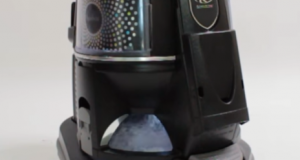Type Of Oil Is Used In A Vacuum Pump
What Type Of Oil Is Used In A Vacuum Pump is one of the important thing to know. The concern of what type of oil a vacuum pump uses arises frequently and results in many confusing answers. If you use a vacuum pump, you should become familiar with its oil. Each type of pump has different oil requirements, and the oil needs you to inspect and replace periodically. In this article, we will discuss several general applications and lubricants used in vacuum pumps.
The Importance Of Oils In Vacuum Pumps
Lubricants are necessary for multiple purposes such as cooling, removing contamination, reducing friction, and creating fluid seals. To promote long equipment life and healthy equipment operation, the lubricant must fulfil all of these roles effectively and efficiently.
The relationship between vapour pressure and oil volatility makes vacuum pump applications somewhat unique. When the temperature increases, volatile oil is more likely to turn from a liquid to a vapour. In vacuum pumps, pressure tolerances are so tight that any differentiating factor can interfere with the intended operation of the pump. Lubricants with low vapour pressure will keep the system operating at peak efficiency.
Vacuum Pump Performance – How Does Viscosity Affect It
Every vacuum pump design requires a different lubricant. One needs to choose oil on the basis of viscosity.
When the lubricant is too thin, it will not create the proper lubrication seal the pump needs. It can result in a loss of efficiency because of leakage or reversals of the flow. If lubricants are too thick and sticky, they will restrict flow and lead to lubricant starvation.
Industrial Oils For Vacuum Pumps – Types And Uses
What about all those different kinds of oil on the market? Hydro-treated or hydrocracked paraffinic oils, polyalphaolefins (PAOs), diesters, polyesters (POEs), petroleum oils, mineral oils, and even semi-synthetic oils may seem complicated at first.
Let us focus on a few of these other fluid types in vacuum pump applications, beginning with these base oil types that you’re probably not familiar with. Mineral oils and petroleum oils are the same things. Oils that are hydrotreated or hydrocracked are refined, further processed petroleum oils that have had some or most of the impurities removed.
The synthetic oil option called PAO stands for polyalphaolefin. Good oxidative or thermal stability characterizes them, good high and low-temperature performance, and excellent compatibility with mineral oils and most synthetics.
Ester oils, such as diesters and POEs, are more thermally stable than most synthetic oils, and they often are used in conditions requiring an increased operating temperature. The high polarity of these esters prevents varnish or sludge from forming.
Their natural detergent properties also make them an excellent cleaner. Typically, semi-synthetic combines synthetic base stock with petroleum or mineral oil. A blend of synthetic oils that combine the properties of several synthetic oils may work best in high-demand applications.
What Type Of Oil Is In A Vacuum Pump and Its Importance
You may be overwhelmed by the sheer number of options, all including the same base oil, and wonder which one would be best. There are many additive packages available because of the wide range of applications.
Certain products may require a significant amount of antioxidants, while others may need additional anti-wear additives. Some additives serve as pour point depressants, corrosion inhibitors, or even anti-foaming agents.
A good mix of additives in the right concentration is an essential focus to ensure that the finished lubricant performs its duty properly. Years of experience in formulating these products, testing them in the field, and investing in research and development will set one manufacturer apart from another.
Choosing An Oil – In A Vacuum Pump
There are also a bunch of outside variables that might affect lubricant choice. Some things to keep in mind are severe conditions, unique applications, compatibility with different process materials, and harmful contaminants.
Hot temperatures can put a strain on these oils. Typically, manufacturers provide a rating that indicates how long the oil will last under ideal conditions. A 20-30 °C temperature differential can significantly shorten the oil’s useful life. Petroleum oils may varnish or develop hazardous sludge if run too long at high temperatures. A reliable oil analysis program allows analysis of oil conditions and their expected life in various applications and environments.
The Final Verdict
There may be instances when you need to stray from the OEM standards. During these times, you should consult your trusted oil supplier, technician, or engineer. OEMs spend a great deal of time determining what type of lubricant is best for their equipment or the specific application. The goal for any aftermarket oil manufacturer is to formulate a product that meets or exceeds the performance requirements of OEM oils.




